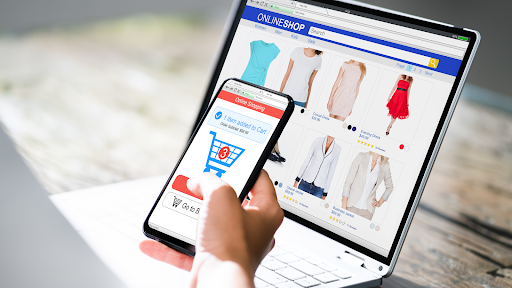Great marketing is always predicated on an understanding of the target demographic. Gaining insights into their needs, their desires, and their interaction preferences is key to creating meaningful engagement. For those marketing to the tail end of the Millennial generation, it’s increasingly important to understand that you are selling to those who may well be experiencing the quarter-life crisis.
This is not the same quest to recapture youth as during a midlife crisis. For those in their mid 20s and early 30s, contemporary life can be plagued with anxiety and uncertainty. This period puts a sharp focus on their insecurities about the path they’ve taken in life. They will often find themselves depressed about their inability to hit milestones that they believe society expects from them. There also tends to be an intense examination of their career goals and relationships. As such, these concerns will be reflected in the consumer decisions they’ll make in everything from food services to vehicles.
So what marketing approach should you be taking to those going through the quarter-life crisis? What elements should you be aware of, and how can you leverage these to capture their attention? Let’s take a closer look at some core considerations.
Stability
One primary component that is likely to be affecting those going through the quarter-life crisis is economic caution. Although they tend to be better educated, Millennials earn on average 20% less than Boomers. There is also a sense that the preceding generations have created an economic position that puts Millennials at a distinct financial disadvantage. This means that marketers need to work alongside their demographic’s need to achieve a sense of stability.
We’re not necessarily talking about creating a marketing strategy that emphasizes the lowest possible prices. It’s more that businesses have to demonstrate how they go the extra mile to ensure customers get the most out of their investment. Companies operating in e-commerce spaces for perishables, such as food, need to create materials that show how the raw items they provide can be enhanced. Recipe cards can be a good approach, here, as they serve as marketing content and are useful to consumers — as do blogs that give nutritional guidance, and best practices to prevent wastage. Many businesses are finding subscription boxes a successful marketing approach here. These packages take care of consumers’ need to replenish products without having to spend additional time and resources going to supermarkets. Make sure your products represent one less worry in customers’ lives.
Larger, higher-priced items become more challenging. Houses and new cars are very much viewed as aspirational objects. Marketing materials need to discuss how these can be accessible to Millennials. Create content that provides practical guidance, and introduce them to resources that can help. Produce longer blog posts about how others in their peer group have acquired these items responsibly despite widespread economic uncertainty. When selling to the quarter-life crisis, it can also be wise to highlight how these larger items can result in greater stability for them as investments, allowing them to apply attention to their other life goals from a position of strength.
Values
A quarter-life crisis for this generation is often synonymous with feeling somewhat ineffective — that they haven’t lived up to expectations. They do, however, place a high premium upon their values and prefer engaging with businesses that reflect the same commitment to social responsibility that they do. This means that marketers have the potential to make an impact by leaning into how customers can make a difference in the world through shared ethics.
Those in e-commerce spaces should be exhibiting transparency. Make it clear throughout your website where raw materials or food ingredients are sourced, and that any labor is undertaken ethically. Give them opportunities for collaboration on charitable projects with you — connect them to apps that help reallocate food rather than waste it or provide options for them to donate your products to schemes in local marginalized communities.
One of the most effective ways to connect with those going through a quarter-life crisis is to build your shared values into your website user experience (UX). Great content is one of the core components here for Millennials. Create blog posts and videos that go into detail about your commitment to social responsibility. Most importantly, make these easily shareable on social media — this can help customers feel as though they’re not just contributing as consumers, but also making a difference by signal boosting to their online community. Give them opportunities to produce user-generated content that you’ll post on your website and social media channels; help them to feel validated in their connections with you.
Experiences
When marketing to the quarter-life crisis, you need to understand what is consistent about your consumers’ concerns during this time; their uncertainty about relationships, their life choices, and their career goals. This doesn’t suggest a longing for the acquisition of material things. Rather, this is a reflection of feeling unfulfilled in their life experiences. This is also consistent with what we already know about Millennials as consumers — they generally have a preference for interesting experiences above shiny new objects.
This means that marketing can benefit from leaning heavily into how the business is focused on positively contributing to their life experiences. Create loyalty programs that provide more than the usual coupons or free products. Seek out partnerships with businesses that can address some of the pain points of the quarter-life crisis — discounts on vacations, introductory offers on e-learning courses to help them upskill, even free movie and concert tickets.
Perhaps the best way to contribute during their life experiences is to be in their corners. Go further than basic customer service designed to retain consumers. Actively show that you are there to support them. Create an open and genuine dialogue via your social media channels, invite them to reach out to you with ideas about how you can better contribute to the online and in-person communities that they are a part of. As many may be considering career moves that include starting their own businesses, provide them insights into how to approach this, and perhaps join a mentorship program.
Conclusion
To market successfully to those going through the quarter-life crisis, businesses need to take actions that help address and ease the associated issues. Emphasize how products contribute to a stable lifestyle, lean into your shared values, and help improve their life experiences. The most effective strategies here don’t just take a purely commercial stance but apply empathy to better understand customers and how to support them.
Don’t forget to share this article


